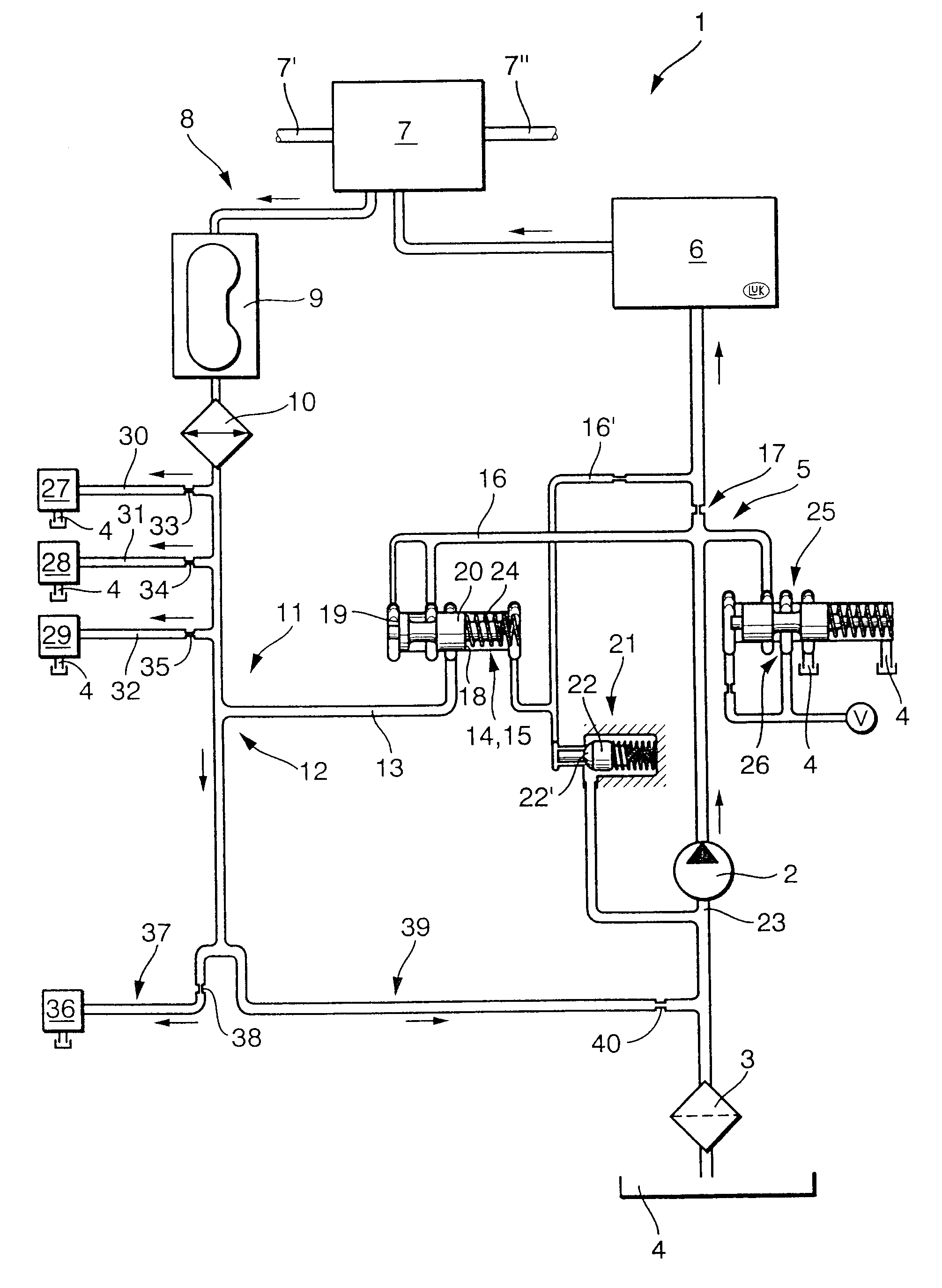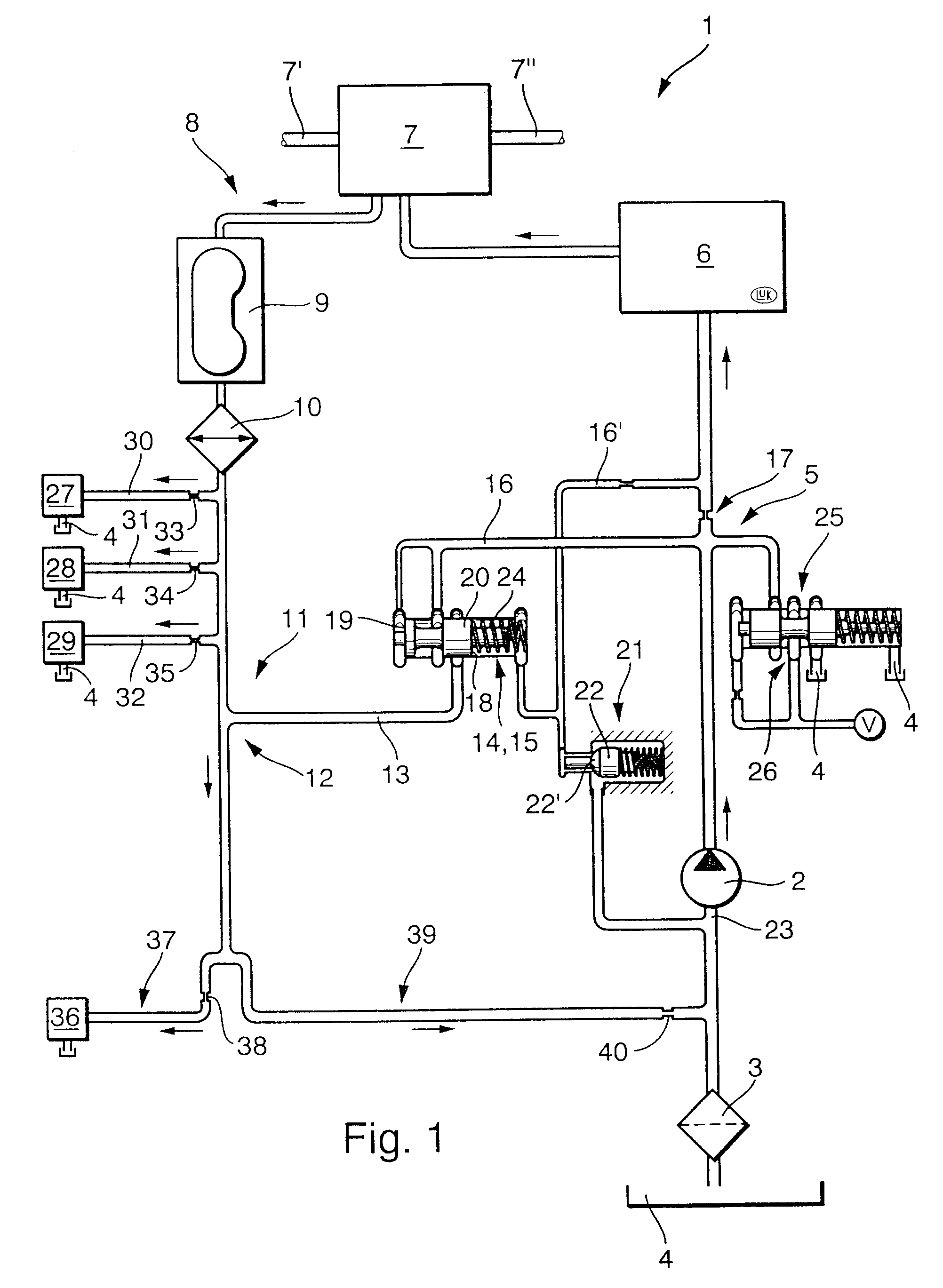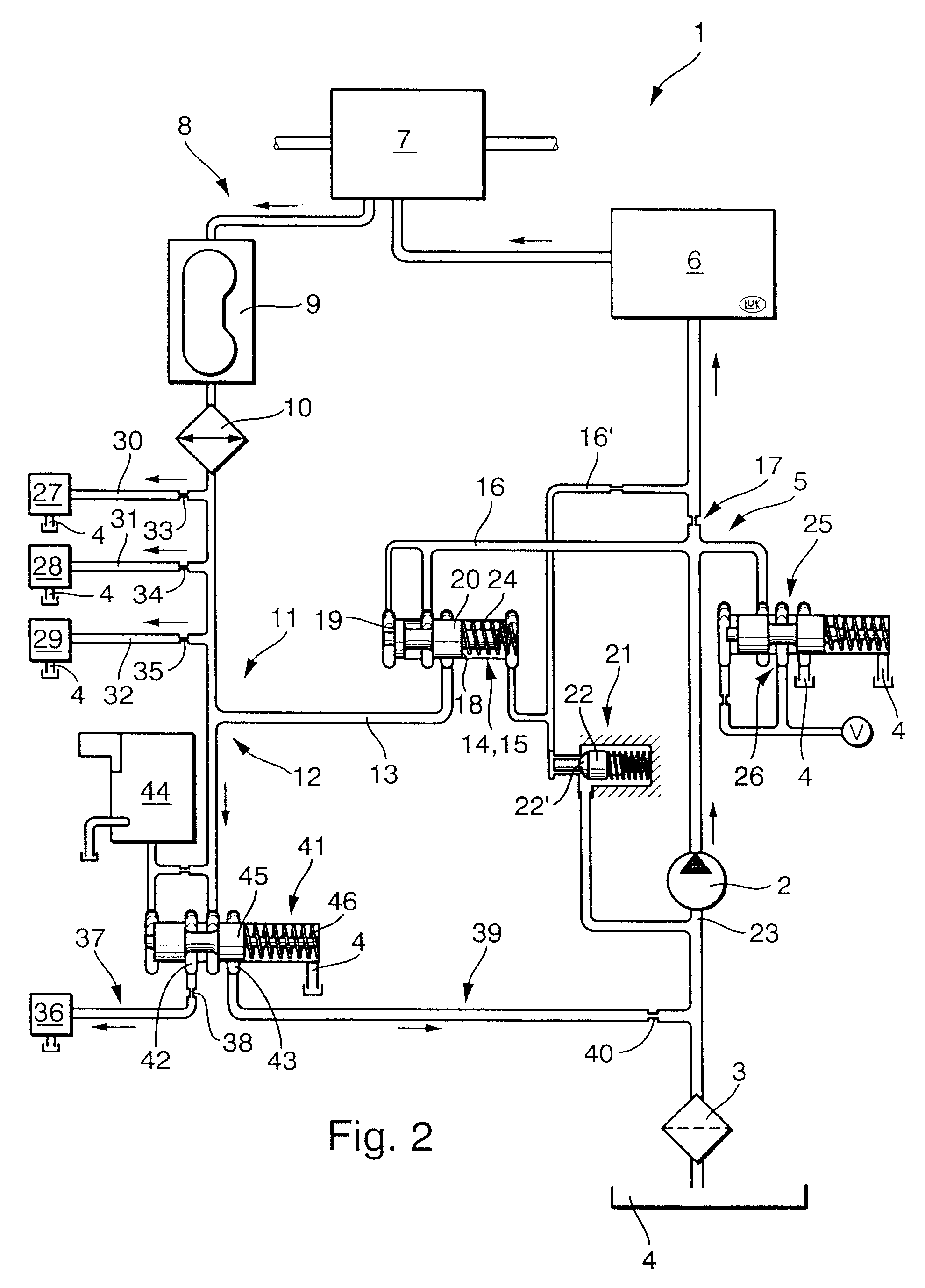Transmission
a transmission and automatic technology, applied in the direction of gearboxes, gearing control, friction gearings, etc., can solve the problems of large fluid requirements and conflict between design objectives, and achieve the effects of avoiding or avoiding or avoiding friction, facilitating the grinding of sealing surfaces, and good alignment of piston faces
- Summary
- Abstract
- Description
- Claims
- Application Information
AI Technical Summary
Benefits of technology
Problems solved by technology
Method used
Image
Examples
fourth embodiment
FIG. 4 illustrates an automatic transmission 1. The parts in FIG. 4 that are identical or have identical functions as in the preceding FIGS. 1 to 3 are again identified by the same reference symbols.
According to FIG. 4, the return circuit 8 leads from the transmission control system 6 to the converter 9. This configuration is based on the fact that the return circuit preferably follows after the last pressure-limiting valve in the high-pressure circuit. In FIGS. 1 to 3, the last pressure-limiting valve is a so-called torque sensor, which is used in cone-pulley belt-drive transmissions to set the contact pressure that the cone-pulley discs exert against the chain-belt. In the automatic transmissions of FIGS. 1 to 3, the torque sensor (not shown) acts as a pressure-limiting valve and, consequently, the return circuit follows the torque sensor. In the embodiment of FIG. 4, however, the last pressure-limiting valve is arranged in the transmission control system 6 and is configured, e.g....
first embodiment
FIG. 5 illustrates the threshold-pressure valve 50. The valve bore 53 is closed off by a plug 56 that is inserted in the valve bore 53 with a seal-ring element 57. The valve bore 53 is configured with steps and has three sections of different diameter, i.e., a first section with a diameter d1, a second section with a diameter d2, and a third section with a diameter d3. Furthermore, there are internal ring channels 58 and 59 inside the valve bore. Ring channel 58 communicates with the output port 43 of the switching device 41', and ring channel 59 communicates with the intake portion 23 of the fluid conveyor device 2. Adjoining the ring channel 59 in the section of diameter d2 is a valve seat 60 that is conically sloped in relation to the lengthwise central axis 61 of the valve bore 53. Thus, the valve seat is formed in a side wall of the ring channel 59. Coming from the bore section of 25 diameter d1, the valve seat 60 is located at the step or transition to the section of diameter ...
PUM
 Login to View More
Login to View More Abstract
Description
Claims
Application Information
 Login to View More
Login to View More - R&D
- Intellectual Property
- Life Sciences
- Materials
- Tech Scout
- Unparalleled Data Quality
- Higher Quality Content
- 60% Fewer Hallucinations
Browse by: Latest US Patents, China's latest patents, Technical Efficacy Thesaurus, Application Domain, Technology Topic, Popular Technical Reports.
© 2025 PatSnap. All rights reserved.Legal|Privacy policy|Modern Slavery Act Transparency Statement|Sitemap|About US| Contact US: help@patsnap.com



